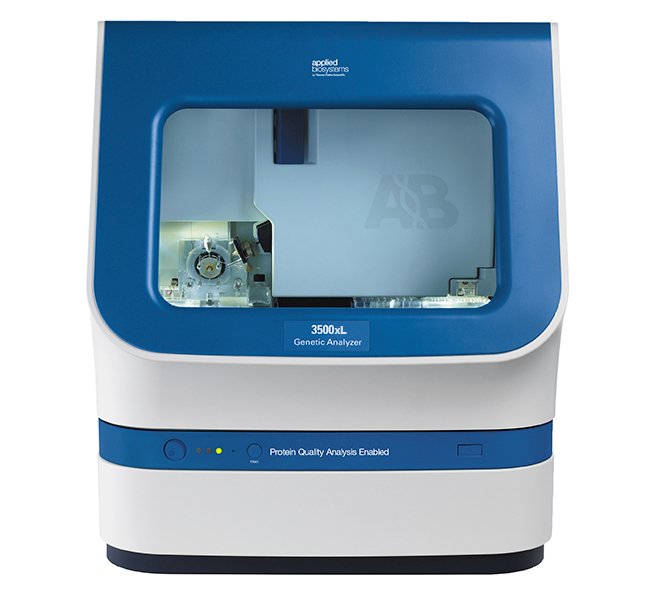Lipid Metabolism Affects GBA-Associated Parkinson's Disease
By LabMedica International staff writers
Posted on 13 Aug 2021
Parkinson’s disease (PD) is the most common neurodegenerative disorder after Alzheimer’s disease. The pathognomonic hallmark of PD is the degeneration of dopaminergic neurons of the substantia nigra and, consequently, the striatal dopamine depletion.Posted on 13 Aug 2021
Brain cholesterol metabolism has been described as altered in PD patients. Plasma 24-OH-cholesterol has been considered as a possible biomarker for PD. Several genes have been associated with the familial forms of PD. The identification of these genes and their mechanisms provides an insight into PD etiopathology.

The Applied Biosystems 3500xL Genetic Analyzer (Photo courtesy of Thermo Fisher Scientific).
Neuroscientists at the Universidad de Sevilla (Seville, Spain) and their colleagues, included in a study included 403 PD patients (342 sporadic PD patients, 30 glucocerebrosidase (GBA)-associated PD patients, and 31 Leucine-rich repeat kinase 2 gene (LRRK2) -associated PD patients) and 654 healthy controls (HCs). The team measured Total cholesterol (TC), high-density lipoprotein (HDL), low-DL (LDL), and triglycerides in peripheral blood.
Genomic DNA was isolated from peripheral blood samples by standard or automated methods, DNA Isolation Kit for Mammalian Blood, MagNA Pure LC, (Roche Life Science, Indianapolis, IN, USA); or Maxwell 16 System, (Promega Corporation, Madison, WI, USA). High-resolution melting (HRM) analyses were performed on a LightCycler480 (Roche Diagnostics, Rotkreuz, Switzerland). Samples showing abnormal melting profiles, including those with variants, were sequenced on both strands using the BigDye terminator cycle sequencing kit (Applied Biosystems, Foster City, CA, USA) and resolved on an ABI3500 genetic analyzer.
The scientists reported differences in TC and triglycerides levels between groups were statistically significant after adjusting for age and sex. There were no significant differences in HDL levels between PD patients and HCs. Multivariate ANCOVA revealed significant differences among the groups within cholesterol and LDL levels. GBA-associated PD patients had significantly lower levels of total cholesterol and LDL compared to LRRK2-associated PD patients and HCs. The different serum cholesterol levels in GBA-associated PD might be related to diverse pathogenic mechanisms. LRRK2-PD patients had the highest levels of both TC and LDL (213.73 ± 30.01 mg/dL and 141.09 ± 30.48 mg/dL, respectively).
The authors concluded that their results show that GBA-associated PD patients have different serum lipid profiles, and support the hypothesis of lipid metabolism disruption as one of the main pathogenic mechanisms in GBA-associated PD. The study was published on July 16, 2021 in the journal npj Parkinson's Disease.
Related Links:
Universidad de Sevilla
Roche Life Science
Promega Corporation
Roche Diagnostics
Applied Biosystems













